A reader chided me for not using the same methodology when testing my copy of the Fujifilm GF 100-200 and another reader’s copy. To review, I tested my copy with a very complicated program that analyzes stacks of focus bracketed images, white balances the raw MTF curves, fits curves to critical measures, and calculates metrics from there, including MTF50. The reader with the 100-200 didn’t do the focus bracketing (I didn’t ask him to) and therefore I couldn’t use my program.
But I have to admit that the critic is right. I went back and found the original RAF files for my copy of the lens — in this case, it’s a good thing that I am such a digital packrat. I analysed them with Imatest in the same way I looked at the reader’s samples from the 100-200. I picked the sharpest on-axis image at f/5.6, f/8, f/11, and — what the hey, I’ve gone this far — f/16.
Here they are:
f/5.6:
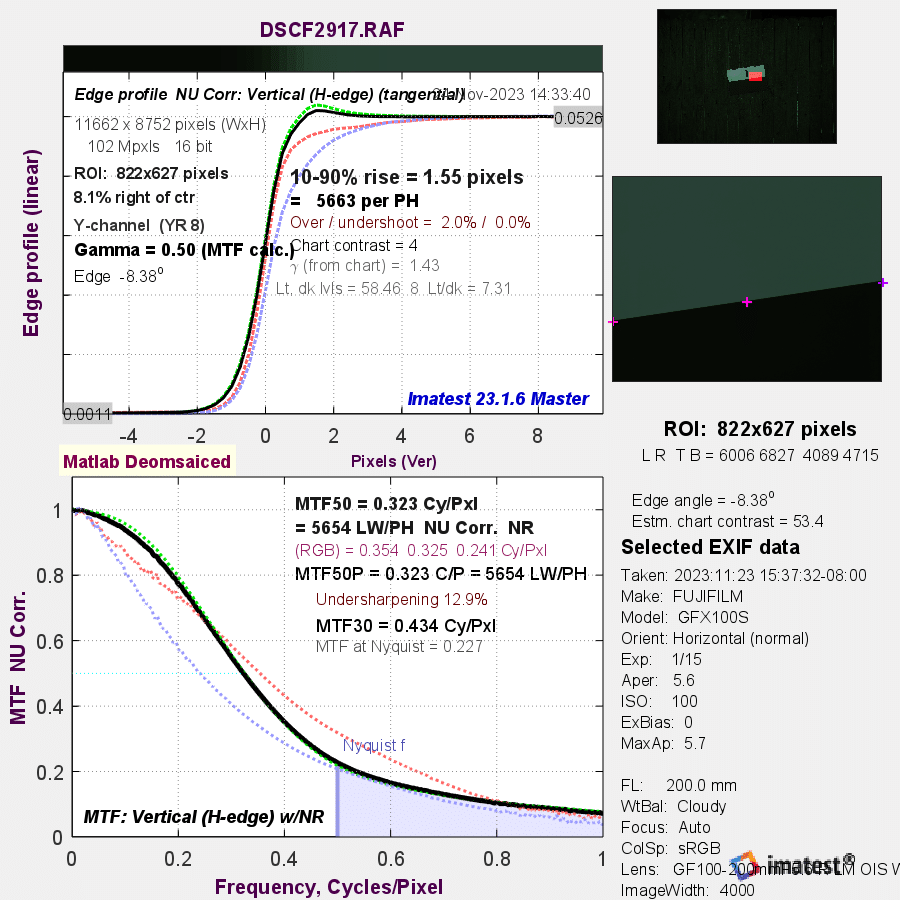
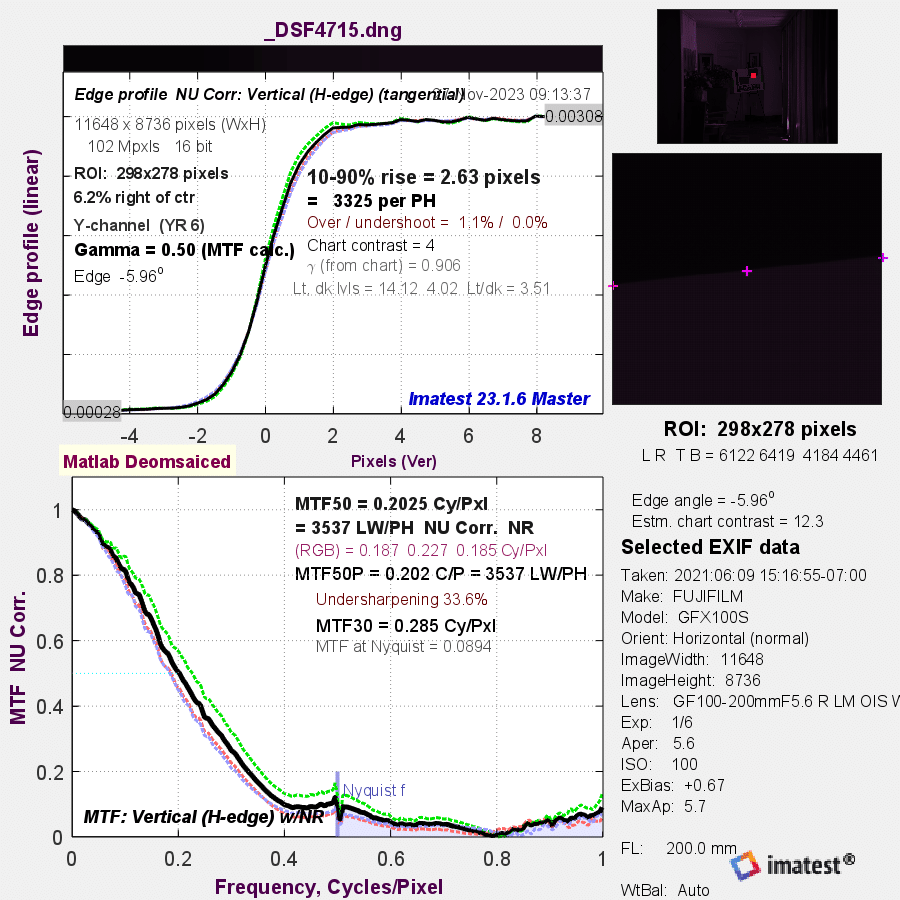
Mike’s image is sharper, bu has mor longitudinal chromatic aberration (LoCA).
At f/8:
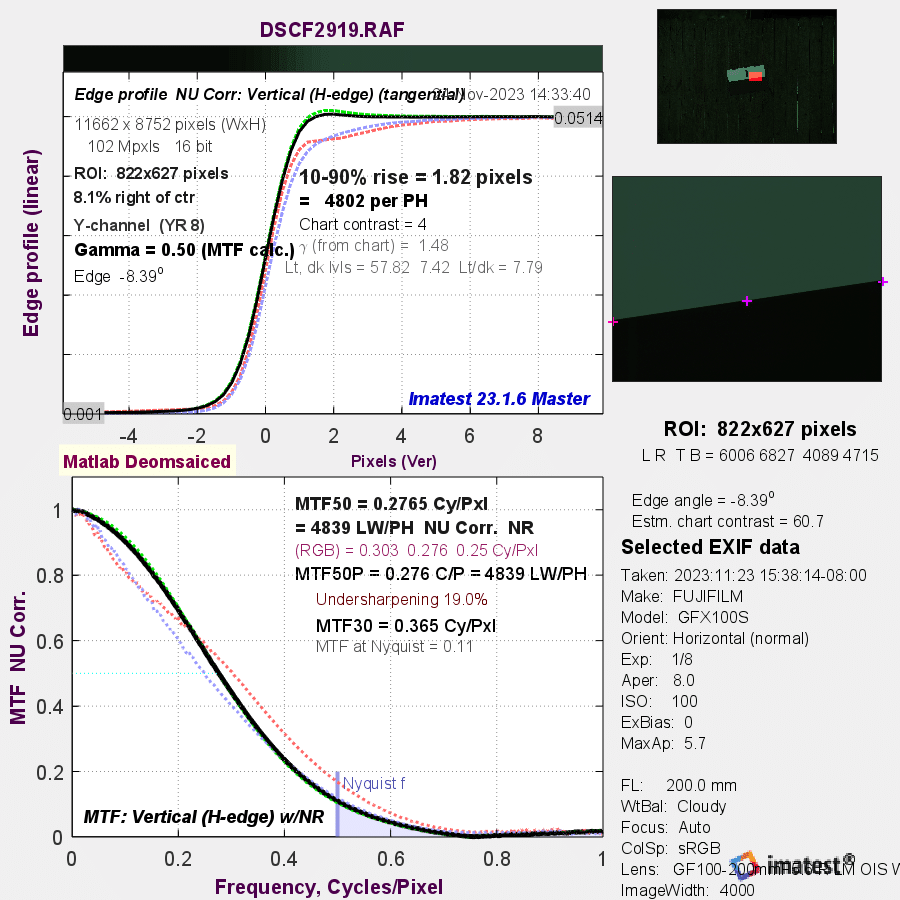
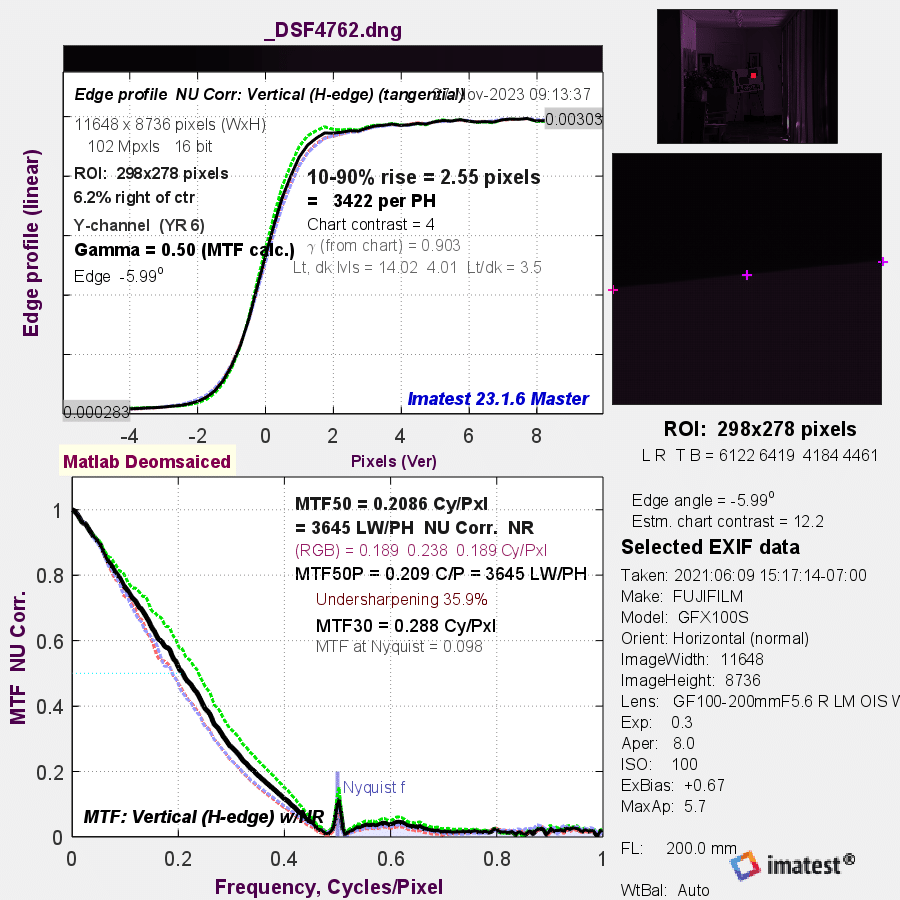
At f/11:
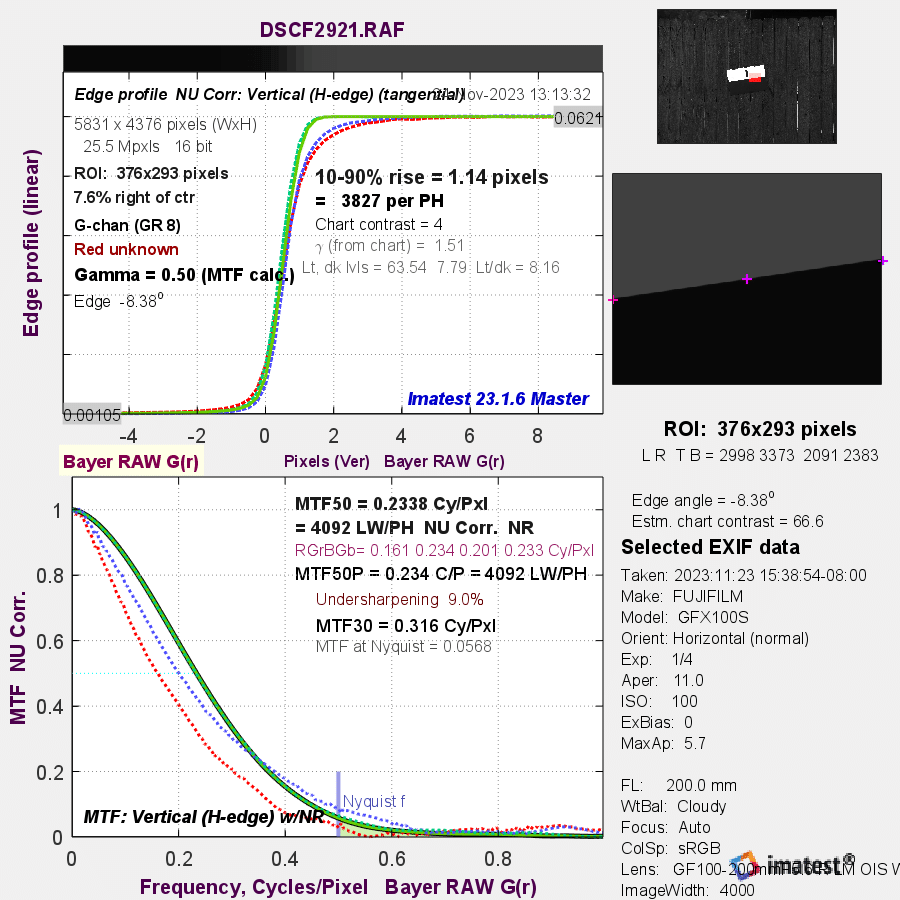
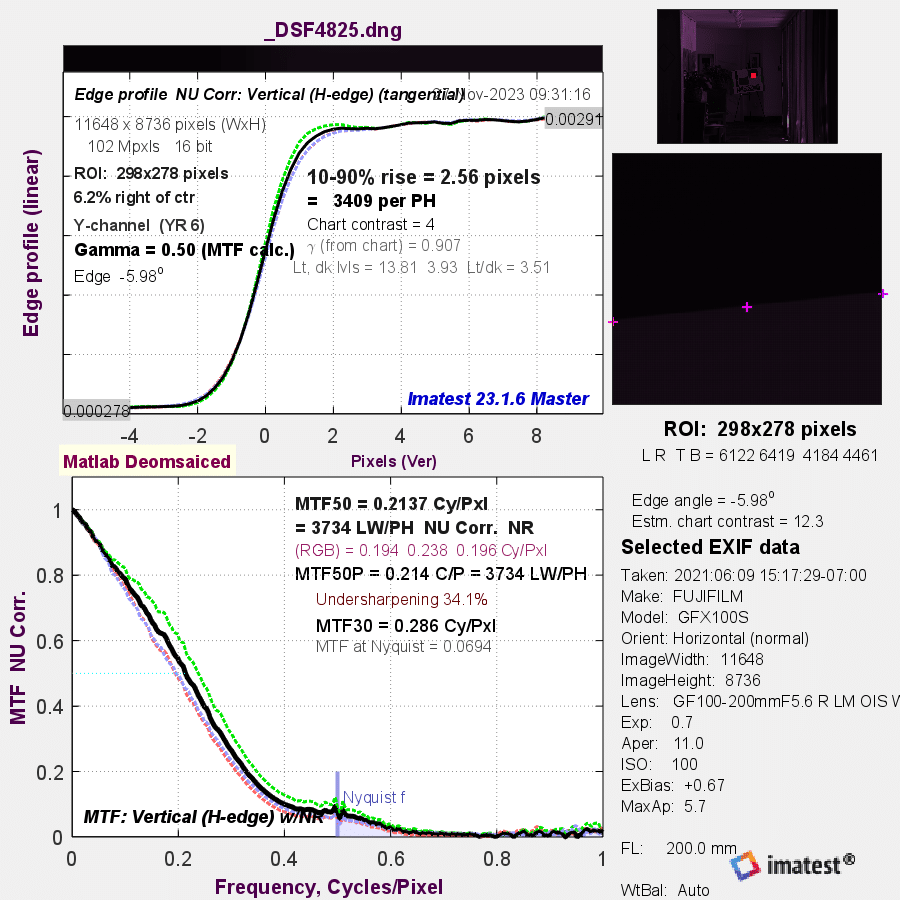
Again, significantly more LoCA with Mike’s’ copy.
At f/16:
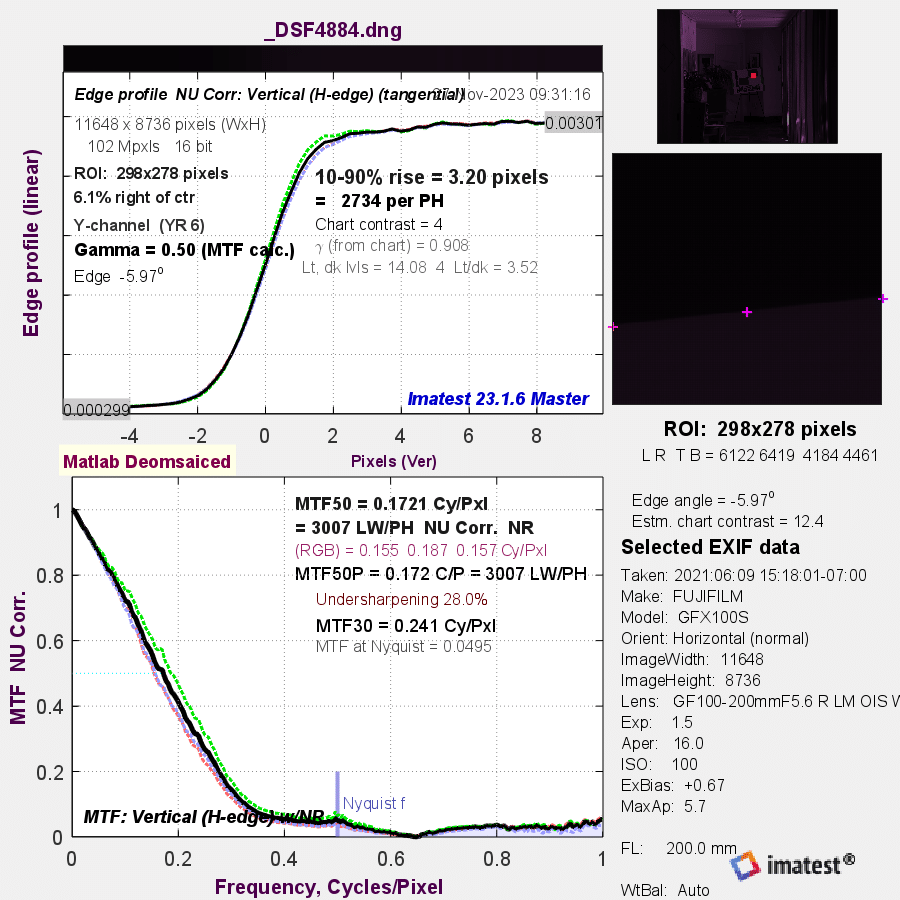
MTF50 comparison:
The numbers are different, but my conclusion is the same. Mike’s lens is sharper than mine on-axis at f/5.6 and f/8.
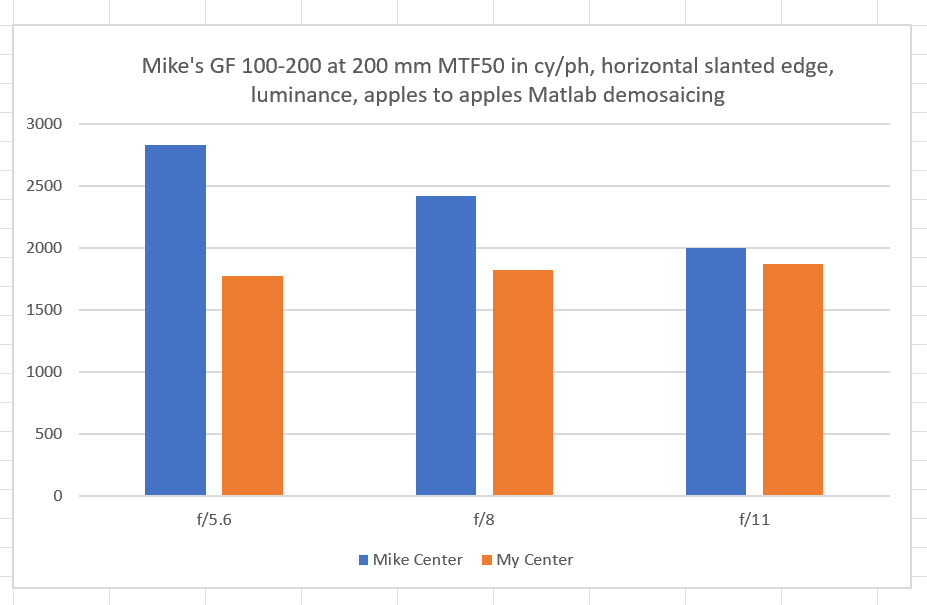
Erik Kaffehr says
To my surprise, Mike’s images seem to apply some sharpening, quite obvious from the edge profile. Your image doesn’t have it. Or, it can be blurred so the sharpening on the raw is not visible.
I was thinking about a Zeiss Distagon design that Brandon Dube has mentioned. He wrote somewhere that it could adjusted so it was sharp in the center, but less sharp off axis, or to have even sharpness across the field, but not very sharp. Could the 100-200 be somewhat similar?
JimK says
I think my image is sufficiently blurry that you can’t see the sharpening performed by Matlab’s demosaicing algorithm.
Steve Hendrix says
Hi Jim.
What do you make of the differences in trajectory from wide open to 2 stops down being so different with each lens? These days, many lenses are sharper at the large aperture end of the range, including at times, even max aperture. Still, it seems odd that Mike’s copy is sharpest at max aperture, and then projects down, while your max aperture is least sharp, but projects upward as you stop down (though not as dramatically as Mike’s lens tracks downward for smaller apertures).
JimK says
Steve, I think what’s going on is that my copy has significant aberrations wide open, but those aberrations diminish as the lens is stopped down, and eventually diffraction, which is the same for both lenses, predominates. With Mike’s lens, diffraction is causing loss in sharpness at f/8 and narrower.
Steve Hendrix says
Thanks Jim, that makes sense. In my experience, the 100-200 is one of the lenses with the most potential for variation, not too unsurprisingly. For its size, quite a lightweight lens (that should tell you something), priced @ just $1,999 (and currently $1,500 on promo), a crazy low price for a good 100mm-200mm medium format zoom lens. I’ve seen some very good things with the lens, but when someone buys one, I usually advise them to take a good hard look at it early, to see what sort of copy they got.
Erik Kaffehr says
As Jim says. What is a bit interesting that Jim makes a screening test on his lenses that would ferret out most assembly errors. So we see that Jim’s sample has no major issues.
Both lenses are quite similar on the edge, with Jim’s possibly having a small advantage.
Some lenses are very sensitive to tolerances.
Just as an example, refractive index varies between glass batches. I have seen a video from Nikon on glass making. They prepare two batches of glass, measure index of refraction, crush the glass from both batches and remix in a proportion that would get index of refraction close to ideal. That mix is remelted and used in lens production.
I think that most lenses would have an achromatic group having two different lenses of different diffraction and dispersion. Variation of those parameters could yield different axial and lateral chroma, even with proper assembly.
Jim’s lens screening tests for asymmetry, which would indicate assembly issues. It indicates issues with sharpness, but without having info about expected sharpness it cannot say if it is a good sample or not.
There is a lot of variation between lens samples, even high end lenses.
I would recall a discussion between Brandon Dube who worked with OLAF lens testing, better known as Lensrentals and a guy called Bernard Deleny (or something like that) who was doing a lot of good testing (like Jim does). So, Brandon wrote something like this: We have a lot of MTF tests on that Otus, I’ll check but I am sure I can find some sample that is like yours.
Complex lenses, like zooms, have many air/glass surfaces, so they can control many aberrations, resulting in a very sharp image, when the stars are well aligned. Or rather when the lens groups and optical parameters are well aligned. But there will be significant sample variation.
On the other hand, Roger Ciala, who owns both Lensrentals and OLAF lens testing has written that he has never seen a zoom that was perfect at both ends of the zoom range.
Matt Granger used to have a great interview with the late Dr. Hubert Nasse from Zeiss on lens design, but it seems it has been removed.
JimK says
My screening test will detect deviations from axial symmetry, which are symptomatic of tilt or decentering errors. It is insensitive to errors in refractive index or spherical curvature radius. It is also insensitive to mispositioning of lens elements parallel to the lens axis.